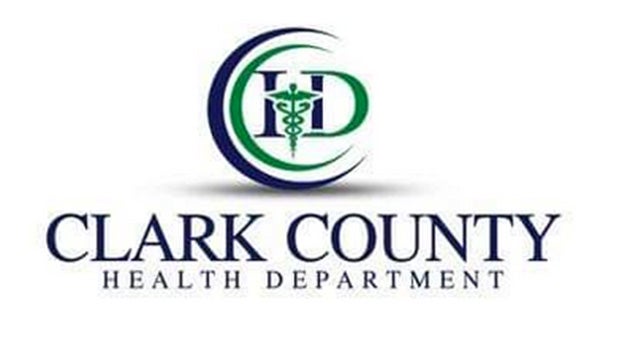Health and Mind: Stroke signs and symptoms
Published 9:04 am Tuesday, November 28, 2023
|
Getting your Trinity Audio player ready...
|
By Cara O’Neill
Clark County Health Department
Stroke is a leading cause of death in the United States and is a significant cause of severe disability for adults. It is also preventable and treatable. During a stroke, every minute counts! Fast treatment can lessen the brain damage that stroke can cause. By knowing the signs and symptoms of stroke, you can take quick action and perhaps save a life—maybe even your own.
What are the signs of stroke in men and women?
• Sudden numbness or weakness in the face, arm, or leg, especially on one side of the body.
• Sudden confusion, trouble speaking, or difficulty understanding speech.
• Sudden trouble seeing in one or both eyes.
• Sudden trouble walking, dizziness, loss of balance, or lack of coordination.
• Sudden severe headache with no known cause.
• Call 9-1-1 right away if you or someone else has any of these symptoms.
Act F.A.S.T. to identify stroke
The stroke treatments that work best are available only if the stroke is recognized and diagnosed within 3 hours of the first symptoms. Stroke patients may not be eligible for these if they don’t arrive at the hospital in time.
If you think someone may be having a stroke, act F.A.S.T. and do the following test:
• F—Face: Ask the person to smile. Does one side of the face droop?
• A—Arms: Ask the person to raise both arms. Does one arm drift downward?
• S—Speech: Ask the person to repeat a simple phrase. Is the speech slurred or strange?
• T—Time: If you see any of these signs, call 9-1-1 right away.
Note the time when any symptoms first appear. This information helps health care providers determine the best treatment for each person.
Do not drive to the hospital or let someone else drive you. Call 9-1-1 for an ambulance so that medical personnel can begin life-saving treatment on the way to the emergency room.
Stroke patients who are taken to the hospital in an ambulance may get diagnosed and treated more quickly than people who do not arrive in an ambulance.1 This is because emergency treatment starts on the way to the hospital. The emergency workers may take you to a specialized stroke center to ensure that you receive the quickest possible diagnosis and treatment.
The emergency workers will also collect valuable information that guides treatment and alert hospital medical staff before you arrive at the emergency room, giving them time to prepare.
At the hospital
At the hospital, health professionals will ask about your medical history and the time your symptoms started.
Brain scans will show what type of stroke you had. You may also work with a neurologist who treats brain disorders, a neurosurgeon who performs surgery on the brain, or a specialist in another area of medicine.
Treating ischemic stroke
If you get to the hospital within 3 hours of the first symptoms of an ischemic stroke, you may get a type of medicine called a thrombolytic (a “clot-busting” drug) to break up blood clots. Tissue plasminogen activator (tPA) is a thrombolytic.
tPA improves the chances of recovering from a stroke. Studies show that patients with ischemic strokes who receive tPA are more likely to recover fully or have less disability than patients who do not receive the drug. Patients treated with tPA are also less likely to need long-term care in a nursing home.
Unfortunately, many stroke victims don’t get to the hospital in time for tPA treatment. This is why it’s so important to recognize the signs and symptoms of stroke right away and call 911.
Doctors may also treat ischemic stroke with other medicines, such as blood thinners, as well as surgery to remove the clot.
Treating Hemorrhagic Stroke
Other medicines, surgery, or procedures may be needed to stop the bleeding from hemorrhagic stroke and save brain tissue. For example,
Medicine, surgery, or other procedures may be needed to stop the bleeding and save brain tissue. For example:
• Endovascular procedures. Endovascular procedures, which can help repair a weak spot or break in a blood vessel, may be used to treat certain hemorrhagic strokes.
• Surgical treatment. Hemorrhagic strokes may be treated with surgery. If the bleeding is caused by a ruptured aneurysm, a metal clip may be put in place to stop the blood loss.
What happens next?
• If you have had a stroke, you are at high risk for another stroke.
• One in four stroke survivors has another stroke within 5 years.
The risk of stroke within 90 days of a transient ischemic attack (TIA) may be as high as 17%, with the greatest risk during the first week.
That’s why it’s important to treat the underlying causes of stroke, including heart disease, high blood pressure, atrial fibrillation (fast, irregular heartbeat), high cholesterol, and diabetes. Your doctor may give you medications or tell you to change your diet, exercise, or adopt other healthy lifestyle habits. Surgery may also be helpful in some cases.
Recovering from stroke: stroke rehabilitation
Rehabilitation after a stroke begins in the hospital, often within a day or two after the stroke. Rehab helps ease the transition from hospital to home and can help prevent another stroke.
Recovery time after a stroke is different for everyone—it can take weeks, months, or even years. Some people recover fully, but others have long-term or lifelong disabilities.
How can I prevent another stroke?
If you have had a stroke, you are at high risk for another stroke. That’s why it’s important to treat the causes of stroke, including:
• Heart disease
• High blood pressure
• Atrial fibrillation (fast, irregular heartbeat)
• High cholesterol
• Diabetes
Your doctor may prescribe you medicine or tell you to change your diet, exercise, or adopt other healthy lifestyle habits. Surgery may also be helpful in some cases.






